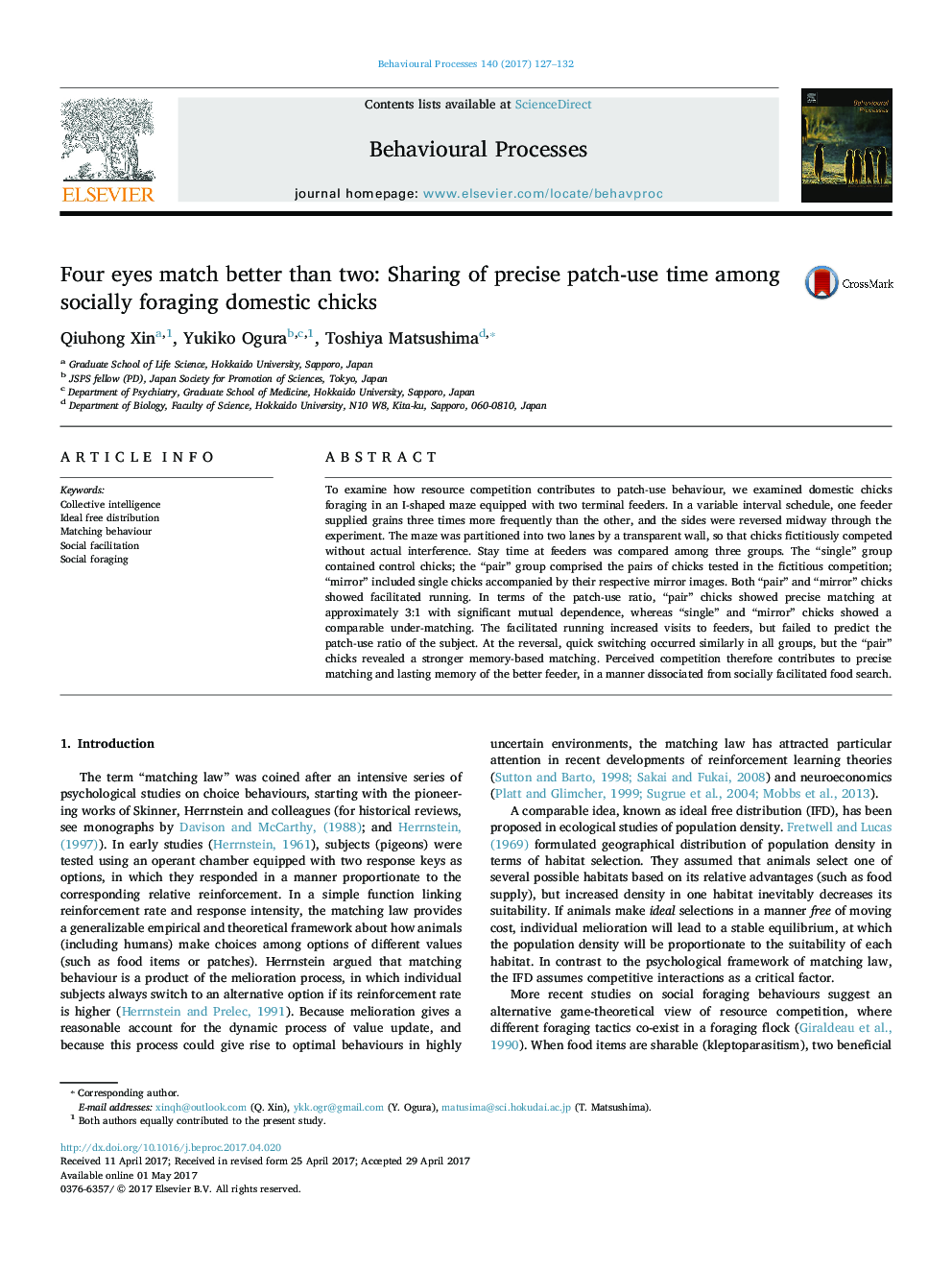| Article ID | Journal | Published Year | Pages | File Type |
|---|---|---|---|---|
| 5539781 | Behavioural Processes | 2017 | 6 Pages |
Abstract
To examine how resource competition contributes to patch-use behaviour, we examined domestic chicks foraging in an I-shaped maze equipped with two terminal feeders. In a variable interval schedule, one feeder supplied grains three times more frequently than the other, and the sides were reversed midway through the experiment. The maze was partitioned into two lanes by a transparent wall, so that chicks fictitiously competed without actual interference. Stay time at feeders was compared among three groups. The “single” group contained control chicks; the “pair” group comprised the pairs of chicks tested in the fictitious competition; “mirror” included single chicks accompanied by their respective mirror images. Both “pair” and “mirror” chicks showed facilitated running. In terms of the patch-use ratio, “pair” chicks showed precise matching at approximately 3:1 with significant mutual dependence, whereas “single” and “mirror” chicks showed a comparable under-matching. The facilitated running increased visits to feeders, but failed to predict the patch-use ratio of the subject. At the reversal, quick switching occurred similarly in all groups, but the “pair” chicks revealed a stronger memory-based matching. Perceived competition therefore contributes to precise matching and lasting memory of the better feeder, in a manner dissociated from socially facilitated food search.
Related Topics
Life Sciences
Agricultural and Biological Sciences
Animal Science and Zoology
Authors
Qiuhong Xin, Yukiko Ogura, Toshiya Matsushima,
